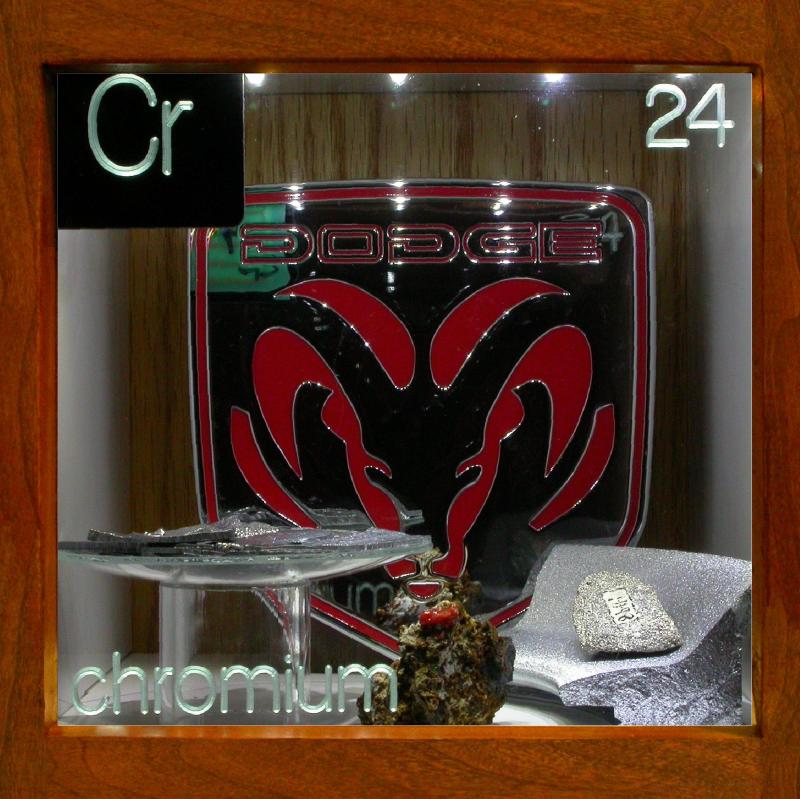Home Size: 1 2 3 4 5 6 7 8 9
|
 |
| A hard, silvery metal with a blue cast that heads group 6. It can be polished to a mirror-like finish and can irritate the skin.
|
|
|
 |
Electrowinning broken plate.
Electrowinning is the process of reducing metal from a solution onto an electrode by way of an electric current. It's a lot like electroplating except that you keep going to build up a thick layer, which is then broken off the electrode and sold. A fair number of high-purity metals are thus available in the form of "broken plate", a result of the electrowinning process.
Source: Scrap yard
Size: 1/2"
Purity: 99.9%
|
|
 |
Sputtering target.
There are several methods for making shiny chrome plated objects. One is to use sputtering targets like this one, which is made out of solid, pure chromium metal. The target is placed in a vacuum chamber together with the object to be shined, and an electron beam is directed at the target, blasting metal off it and depositing it on the object. This example is what's left after most of the target has been consumed: It comes from a scrap yard where it was sent for recycling.
Source: Scrap yard
Size: 2"
Purity: 99.8%
|
|
 |
Dodge emblem.
Chromium is the overwhelming choice for plating shiny things, especially if they are associated with automobiles, like this trailer hitch cover. Chrome bumpers are actually plated mostly with nickel, which is a better and cheaper rust inhibitor, but the outermost layer of plating is always chromium, because it's shinier, and in showroom it's shiny that counts.
Source: Farm & Fleet
Size: 5"
Purity: 99.9%
|
|
 |
Chromite.
Chromium impurities are responsible for the stunning colors of many minerals but chromite, an oxide of iron and chromium, is a less than appealing black to brownish black. What it lacks in beauty it makes up for in importance, being the source of virtually all the world's chromium. It almost always occurs massive (i.e. as solid masses), only rarely forming crystals.
Source: Mackay mineral collection
Size: 1"
Purity: 46%
|
|
|

